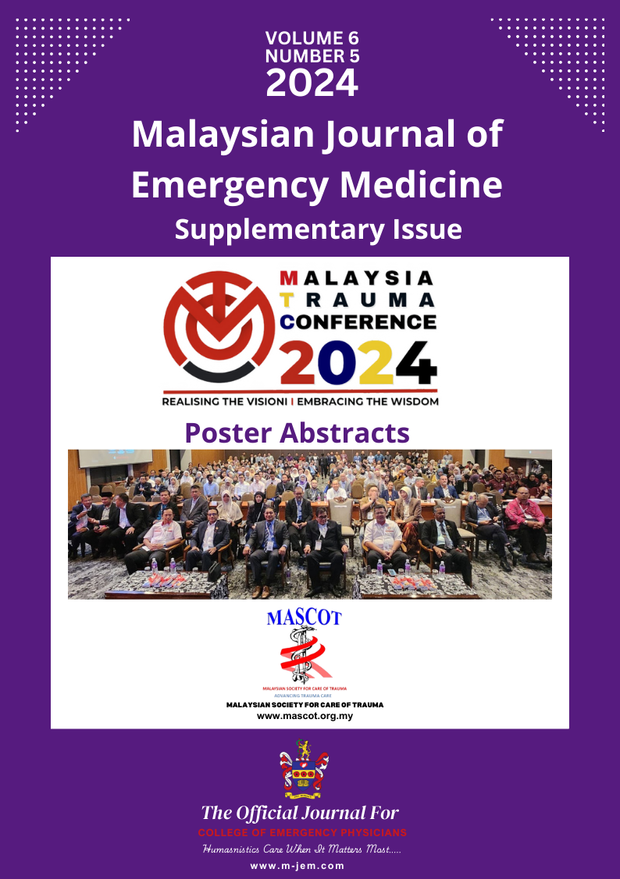A02 Plastic Peril: An Unusual Penetrating Anterior Neck Trauma In A Motor Vehicle Accident
Main Article Content
Abstract
INTRODUCTION
Penetrating neck trauma encompasses 5% of traumatic injuries. Although infrequent, these wounds are significant due to surrounding vital structures and potential complications.
CASE DESCRIPTION
A 20-year-old gentleman presented to a district hospital, following a motor vehicle accident (MVA). He was alert on arrival, with no signs of respiratory distress. A sharp object measuring 4cm x 6cm was embedded in Zone 2 of his anterior neck. There was no active bleeding but crepitus was present. Air entry was equal for bilateral lungs, and there was no desaturation under room air. He was transferred to a referral centre for further management. CT Cervical revealed soft tissue hematoma and air pockets at the right anterolateral neck, with multiple foreign bodies (FB) within. Flexible scope examination showed a patent airway with no laryngeal injury. He underwent wound exploration in which 1 plastic fragment and 2 pieces of small glass were removed. He was discharged well after 6 days.
DISCUSSION
Management of penetrating neck injuries is guided by the ‘platysma algorithm’. The presence of crepitus, which is a ‘soft sign’, indicates that the patient is stable for further imaging to assess the wound prior to surgical exploration. This is because large plastic FB in the neck is easily visible, however smaller glass FB are not immediately seen. Debris from MVA, particularly glass, comprises about 15% of retained FB. Glass measuring ≤2mm may be missed on plain radiographs, such as in this case. Therefore, a CT is warranted as it is able to detect fragments as small as 0.01mm.
CONCLUSION
A CT scan maps out the degree of injury caused by impaled objects in stable neck trauma. This step reduces secondary insult to the neighbouring structures during wound exploration, and ensures complete FB removal in a single attempt.
Metrics
Article Details

This work is licensed under a Creative Commons Attribution-NonCommercial 4.0 International License.

